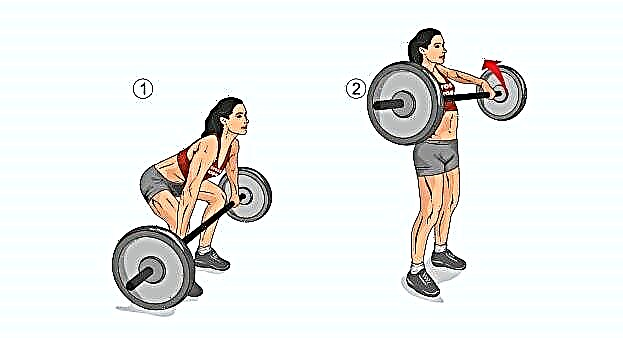Fartlek is a fairly popular training complex lately. It will help, subject to regular exercise, to develop endurance and running speed, as well as prepare for the competition. Some coaches believe that in fartlek it is not necessary to strictly adhere to a training plan, but to improvise.

Others, on the other hand, give advice on training, the amount of time to accelerate, and recovery running. In the article we will tell you about the features and advantages of Fartlek and give approximate plans for such training.
What is Fartlek?
Fartlek is Swedish for "speedy play." This is one of the varieties of interval cyclic training with a constant change in pace of movement: from anaerobic sprint to jogging or aerobic slow walking.
As a rule, fartlek is strongly associated in the minds of many with running. However, it can also refer to other cyclic sports, for example:
- bicycle races,
- rowing,
- swimming.
As for the running version itself, fartlek is a fairly long running session. As a rule, this workout lasts at least forty-five minutes.
It is believed that Fartlek should be carried out most effectively on uneven terrain, rich in ups and downs, with hills and flat areas, in order to ensure a natural change of pace.
Program developer
Fartlek was invented by a Swedish coach Göst Helmer... Thus, he tried to add some variety to the training process of preparing runners for cross-country cross-country runs.
Program description

Fartlek can be used for training with different purposes, it all depends on the duration of the accelerations.
So, the accelerations are short, within fifteen to thirty seconds, should be alternated with a minute or two minutes of jogging. This type of fartlek is used to develop speed skills in cyclic forms.
If you increase the acceleration time to one to three minutes, diluting them with jogging for a minute, you can develop endurance (special or speed), as well as increase the aerobic threshold.
In addition, fartlek can be used on long runs to maintain and increase overall endurance levels.
Remember: the number of repetitions in a fartlek depends on the amount of distance the runner is running.
It is necessary to take into account the training of an athlete, his state of health when selecting training programs. Therefore, we advise you to consult a professional trainer before adding accelerations to your training program.
One of the rules is the following: the intensity of the load should be in the range from 60 percent to 80 percent of the maximum heart rate. That is, the athlete should not feel overwhelmingly uncomfortable, and the training must also include a warm-up and a cool-down.
Fartlek pros
If we talk about the advantages of fartlek, then it should be noted:
- development of endurance,
- strength development,
- development of running speed.
This makes Fartlek similar to other interval training.
Workouts

There is no single training plan for Fartlek, as the lesson must be adapted to the capabilities of each individual athlete.
In particular, for example, one of the workouts:
- Light jogging as a warm-up, for five to ten minutes.
- Running fast at a steady pace for one to two kilometers
- To recover, take a five minute brisk walk.
- Further, jogging, which is diluted with sprints at a distance of fifty to sixty meters. This should be repeated until you feel like you have become a little.
- Light running again, which includes several periods of running against another runner.
- We run upward about one hundred fifty-two hundred meters, high-speed running.
- After a speed run, walk at a brisk pace for one minute.
Repeat this cycle throughout the workout.
In general, this training program can be divided into three phases:
- basic (or preparatory),
- transitional,
- advanced.
Each of these phases lasts for several weeks.
Thus, the basic phase develops strength of muscles and joints, increases the body's ability to efficiently receive oxygen, and also reduces the chances of injury.
The second, transitional phase will help improve strength and endurance.
The third, advanced, phase will help consolidate the achieved result and hone your skills.
Let's consider each phase in more detail.
Base phase

Before you start exercising, you should make sure that your workouts are scheduled for each week. It is best to start exercising in late spring or early fall.
Basic training does not differ in complexity. At the very beginning, during the entire workout, you can do just a couple of snatches.
An example of a fartlek workout is as follows:
- When running a long distance, do one minute acceleration every six to seven minutes.
- After such accelerations, simply return to a calm running rhythm. Avoid excessive acceleration (if you overdo it, then it will be difficult to return to the usual rhythm of running immediately)
- With this workout, you will learn how to "switch" the running speed.
- Once you master this, do many random accelerations as you run, ten to fifteen in a single workout.
The basic phase should be at least six weeks, preferably 0 - more than ten. After that, you can move on to the next, transitional phase.
Transition phase

After mastering the basic phase, you can begin to hone your skills, slowly compete with yourself, and make more strength training.
Here are some of the fartlek workouts you can use at this stage:
- we run for six minutes at a fast pace
- three minutes to recover
- five minutes - at a fast pace
- rest 2.5 minutes
- four minutes at a fast pace
- two minutes of rest
- three minutes at a fast pace
- one and a half minutes of rest
- two minutes at a fast pace
- one minute rest
- one minute at a fast pace.
At the same time, with a decrease in the time for acceleration, the pace of running itself should increase. That is, the intervals are shorter and the running speed is higher.
Another fartlek workout:
- the first interval for two and a half minutes, of which we run a little faster than your usual pace for the first thirty seconds and increase the speed during each subsequent thirty-second interval. The last thirty seconds are at their maximum pace.
- After that, you need to recover by jogging for one and a half minutes.
- Two or four such approaches should be done.
Advanced phase
During the final, advanced phase, we hone our skills and consolidate the achieved result. At this stage of training, you can do the following:
- Option 1. Over the course of six consecutive times, we accelerate for forty-five seconds. After each acceleration, rest for two to three minutes follows.
- Option 2. For fifteen to twenty times in a row, we accelerate for twenty to thirty seconds, after which we fully recover.
The difference between fartlek and other types of training

Some coaches say: unlike, for example, interval or tempo training, fartlek does not have a clear plan. Throughout the training sessions, the runner alternates intervals of acceleration with recovery intervals. These segments can be different in time or in distance: to the "next pillar", to "that blue house over there." You can also practice fartlek with friends, running a race - it's a lot of fun.
At the same time, some trainers recommend carrying out fartlek workout without having a watch, a smartphone, or, in general, any plan. That is, perform accelerations arbitrarily.
The main advantages of Fartlek are:
- this is a psychologically relaxed workout,
- fartlek will help the runner understand his body,
- develops endurance and, which is important, psychological stability.
With each new cycle of fartlek, you will be able to increase your fitness level. The main thing is to perform fartlek without mistakes, correctly, then you can achieve impressive results and perfectly prepare for the competition.









